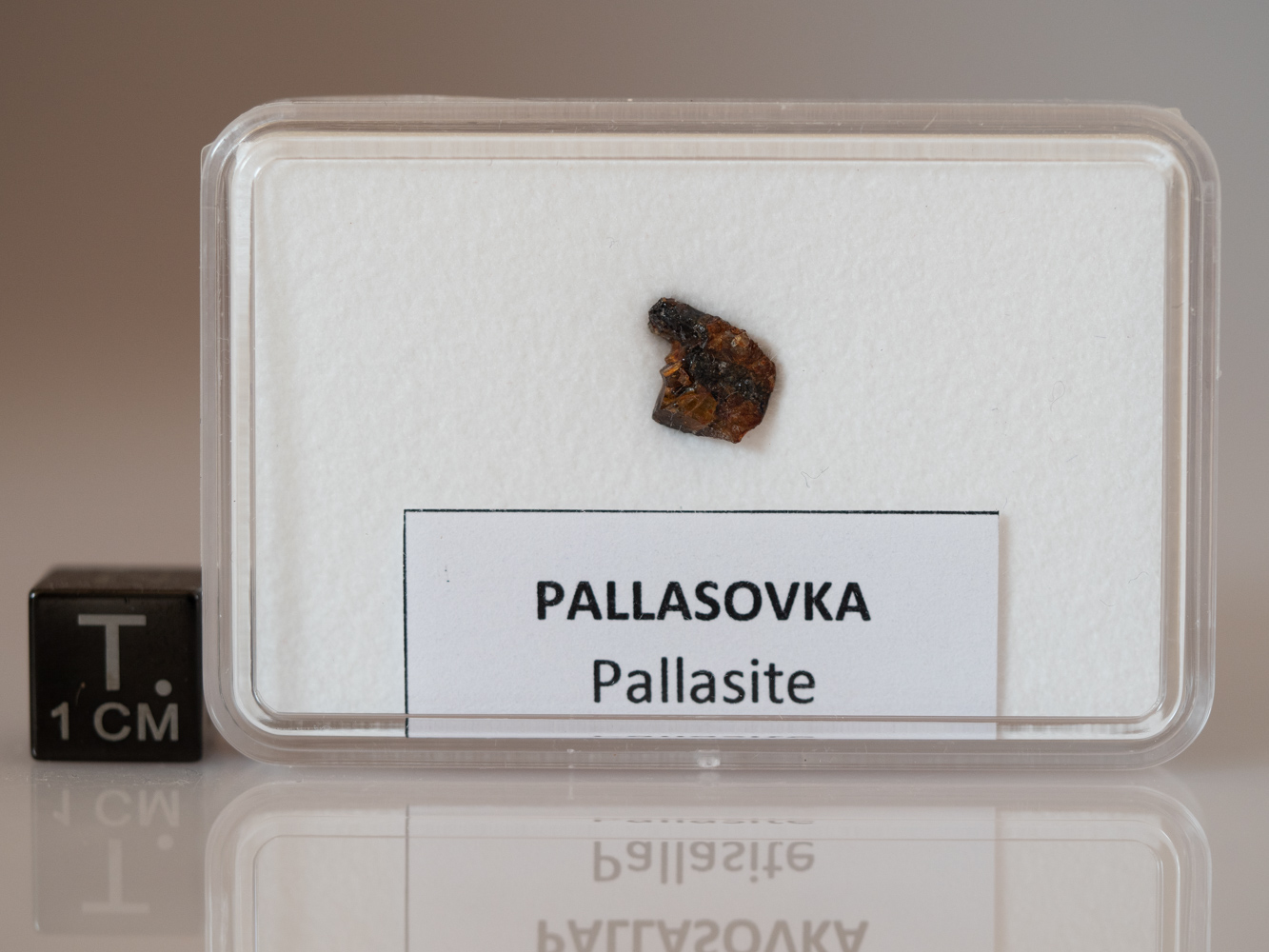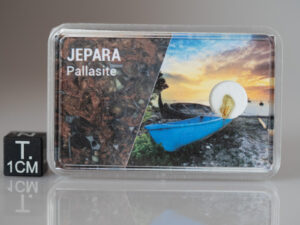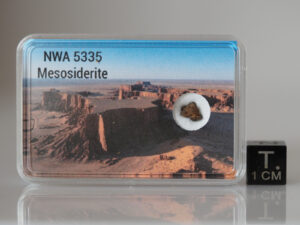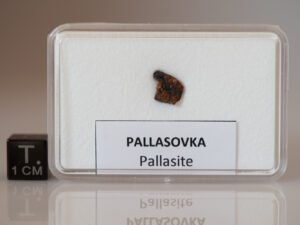Description
Pallasovka 49°52′0′′N, 46°36′7′′E
Volgograd district, Russia
Find: July 1990
Pallasite
History: One stone weighing 198 kg was found by N. F. Kharitonov at a shore of an artificial water reservoir, 27.5 km from the town of Pallasovka. Interestingly, the town was named after Peter Pallas (1741–1811), a famous naturalist who took part in the discovery and the first study of the Pallas Iron Mass, which was found near Krasnojarsk in 1749 and gave the name of the pallasite meteorite group. A. E. Milanovsky transferred a sample of the meteorite to the Vernadsky Institute, Moscow.
Petrography and Geochemistry: (M. A. Ivanova, N. N. Kononkova, Vernad; S. E. Borisovsky, Institute of Geology of Ore Deposits, Mineralogy, Moscow)
Petrography: The stone consists of approximately equal parts of olivine and metal, and has abundant brown, rusty fusion crust with regmaglypts.
Geochemistry: Olivine (mg# 87.7, Fe/Mn = 45.2, Fe/Mg = 0.14; similar to main group pallasites). Metal (bulk ICP AES) Ni = 13.1 wt%; Ir = 0. 12, Au = 2.8, Pt = 3.2, Ga = 22.5, Ge = 24.9 (all ppm). Kamacite (Co = 0.61, Ni = 7.21; both wt%) and taenite (Co = 0.35, Ni = 26.5 both wt%). Additional phases: Troilite (Ni = 0.41 wt%), schreibersite, and chromite (mg# 36; Fe/Mn = 48.9; Cr/(Cr+Al) = 77.2). Note: Chromites in this sample differ in composition from that of the main and Eagle Station groups.
Classification: Pallasite (Main group).
Specimens: A 9336 g sample and one polished section are on deposit at Vernad. The main mass is held by an anonymous purchaser.




